October 2013 was a very busy month as we spent almost the whole time traveling around areas that we wanted to visit for some time. We have been visiting South Brazil every couple of years recently but in November to visit orchid shows and see Laelia (Brasilaelia) purpurata in flower. So we decided that it was time to visit the region with two main objectives this time: 1- see and photograph Cattleya intermedia in full flower in the habitat and 2- see what we could find in the coastal mountains. We knew intermedias would be in full flower early October but were not sure if we could find Sophronitis in flower in the mountains. So let's see what we found out.
We started the trip driving all the way from Rio de Janeiro to Florianópolis in Santa Catarina state. That is a 700+ mile-long trip on the main roads, first from Rio to São Paulo and then to Curitiba and Florianópolis. Those roads can be dangerous if there is strong rain but fortunately the rains are worse from early November on and they were not a problem at all this time. From São Paulo to Curitiba we go from the mountains to coastal plains and then up again getting close to the state of Paraná. There is still a lot of tropical rain forest left on the roadside because there are several sections that are being preserved. This is good as the drive is quite nice seeing mile after mile of forest with trees full of epiphytes. However, this is mostly limited to the mountainous areas and unfortunately most of the coastal flatlands in south São Paulo state have been destroyed. At least, this is what we can see on the roadside.
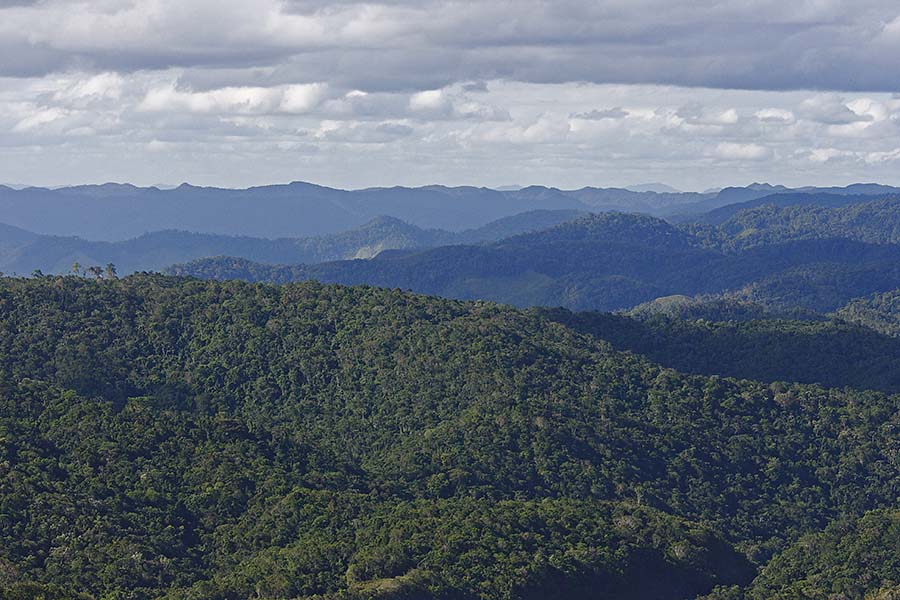 |
|
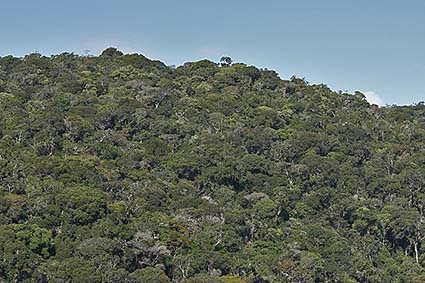 |
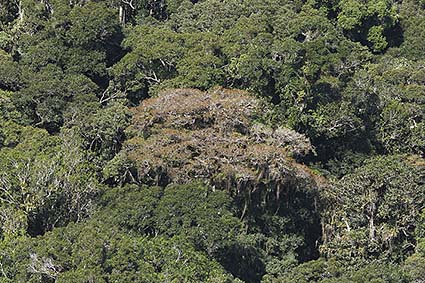 |
| Going from
the coastal lowlands in São Paulo to Paraná, we climb the Serra do
Mar. This is a true hillside tropical rain forest, and in this area
it can still be found in its natural state. The trees are mostly
hardwoods, and among the most impressive are the Jequitibás (Cariniana
spp., Lecythidaceae) which tend to stand out from the
forest. These enormous trees are known to live more than three
thousand years and are very distinctive with their tall vertical
trunks and branched canopy which is usually home for countless
epiphytic orchids and bromeliads. We can see one of these
rainforests above
left, and a Jequitibá above right. As we get to the highlands behind the coastal slopes the forest is extremely rich in big tree ferns and epiphytes but unfortunately we did not have time to stop and explore. The same for the slopes from the highlands in Paraná to the lowlands in Santa Catarina, which are also extremely rich in epiphytes. |
|
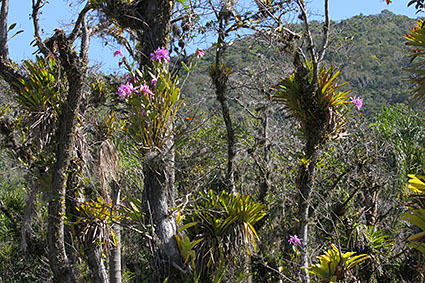 |
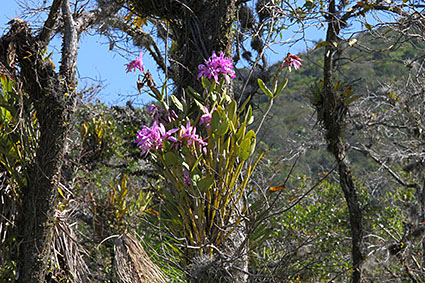 |
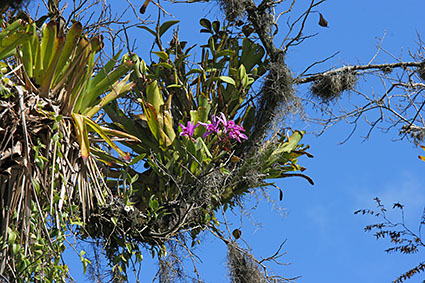 |
In Santa Catarina state, we did not stop in Santa Catarina island due to time constrains as we would need at least a few days to look for orchids there, so plentiful they are. Instead, we drove all the way to Garopaba some 50 miles south. We knew that Cattleya intermedia, among other orchids, is still plentiful on the sand dunes but we wanted to check information that the species is also common in some remaining coastal swamps. So next day we set out to find the swamps and we were not disappointed, Cattleya intermedia is indeed still plentiful there. Plants are everywhere, on all heights of the trunks and producing some large specimens. This tells us that these plants are quite old so we can just hope these swamps are preserved for the future. |
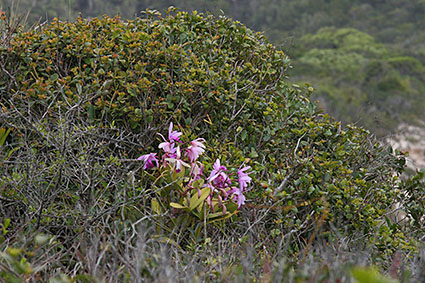 |
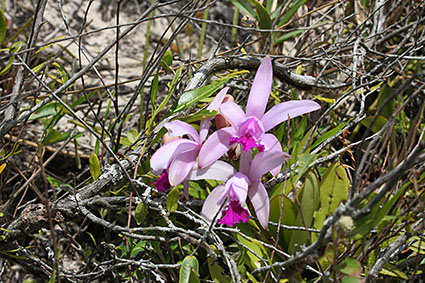 |
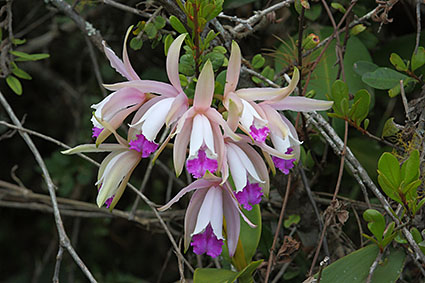 |
And of course we had to check the plants on the sand dunes, something we do every time we go there. These dunes are well developed and sometimes can be tiring to walk on due to the steep sand slopes. The orchids are still very plentiful there, and they flower from September to November. These dunes are fairly rich in orchid species, and besides Cattleya intermedia we can also find C. leopoldii (tigrina) but these bloom later in the year. But the orchid flora is not limited to cattleyas, we can also find species of Oncidium, Cyrtopodium, Vanilla and pleurothallids. |
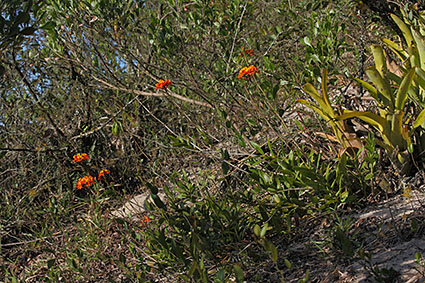 |
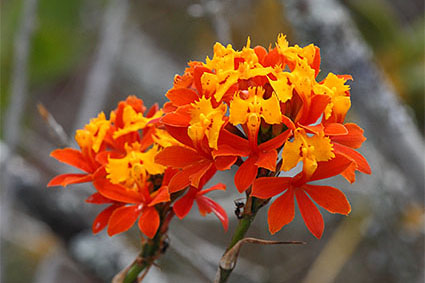 |
| But probably the most common orchid species on these dunes is Epidendrum fulgens. This reed-stemmed Epidendrum grows everywhere, equally well exposed to full sunlight or protected among the shrubs.The inflorescences carry umbels of flowers which vary in color from yellow to red, and all the orange tones inbetween; lips are usually yellow to orange with orange-red markings around the calluses. | |
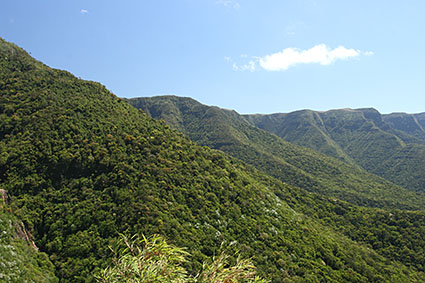 |
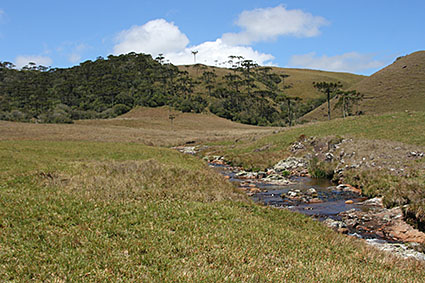 |
| From the
coast, the next day we went up the coastal mountains. In this part
of the country, these mountains are fairly flat tablelands and the
way to go up is driving on steep roads with some very interesting
and sometimes scary hairpin turns. From the road we were going up is
where we took the picture above left. This picture gives a good idea
of the nature of these mountains, which are a long series of canyons
from Santa Catarina to Rio Grande do Sul states. The picture above right was taken after the climb, and depicts the kind of vegetation we can find on the highlands. Even though the elevation is not so much here, usually below 4,000 ft., what we see is alternate Paraná Pine (Araucaria angustifolia) forest and native grasslands. What happens is that we are so much away from the Equator line that the winter frostline is at this elevation. This way we do not see an uniform forest, but whenever we see forest there are lots of epiphytes. There is not so much in terms of species diversity but the quantity of plants can be impressive. |
|
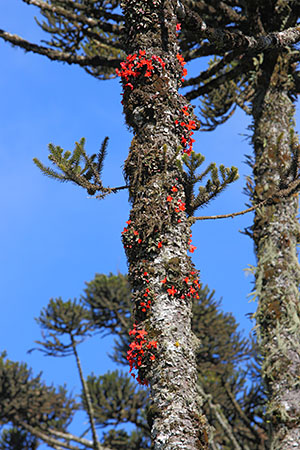 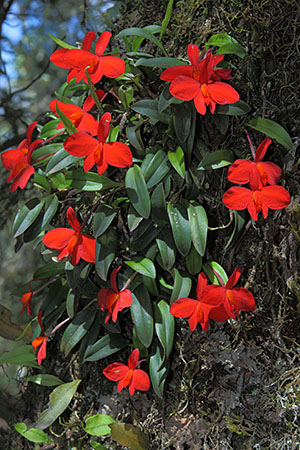 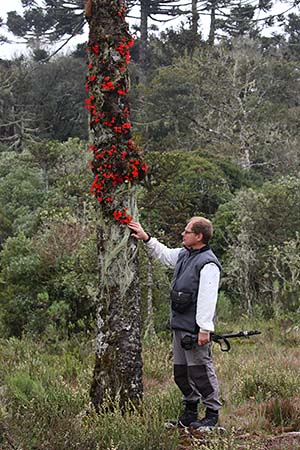 |
|
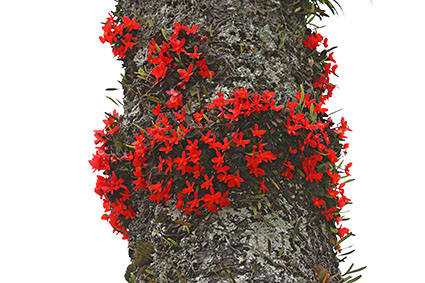 |
The
showiest and most common orchid species in the forest are
Oncidium concolor and especially Sophronitis mantiqueirae.
Sophronitis mantiqueirae is outright abundant and when we
manage to get there during full blooming season the effect is
jaw-dropping. The plants can be found directly on the Araucaria
trees (left and above left) or on almost every other tree in the forest
(above, center). They grow on all heights of the trees, even very low
on the trunks and branches (above, right). Oncidium concolor also grows on Araucaria and most other trees in the forest (below left, below center), and frequently can be seen together with Sophronitis mantiqueirae producing a very nice color effect (below, right). |
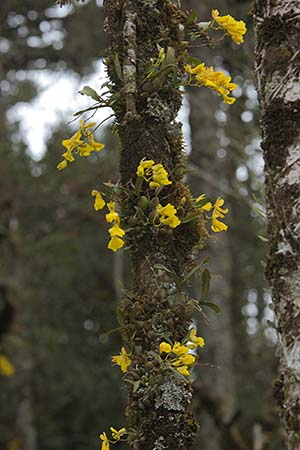 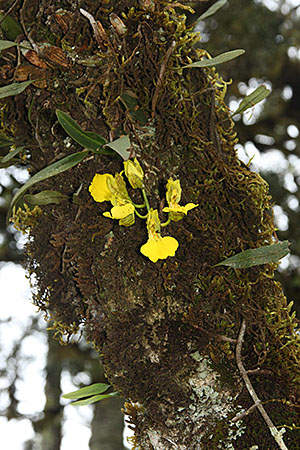 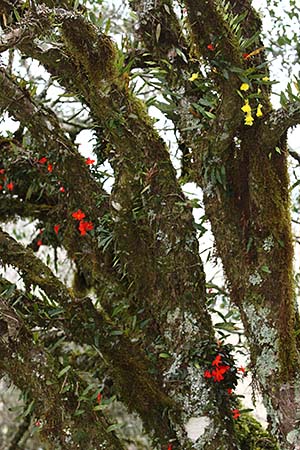 |
|
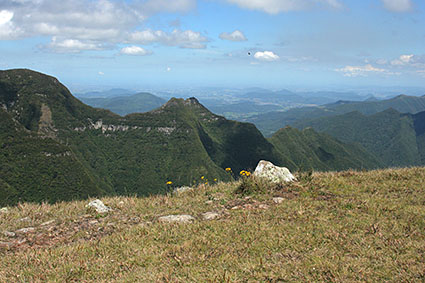 |
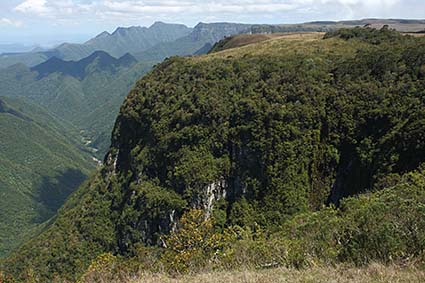 |
| Next day we decided to go explore one of the numerous canyons of the region, and the easiest one for us to access from the top from where we were was the Monte Negro canyon. After a drive of about 25 miles from the city we get to the border of the canyon, and the view is breathtaking. From more than 3,500 ft. elevation we can see all the way to the coastal flatlands. The drop just from the border can be of more than 1,000 ft. so we had to be careful when getting close to the border and looking down (especially as the wind was quite strong). The two pictures above give a good idea of what the canyon looks like, and the black spot on the picture on the above left is not dirt, but instead a flying bird. | |
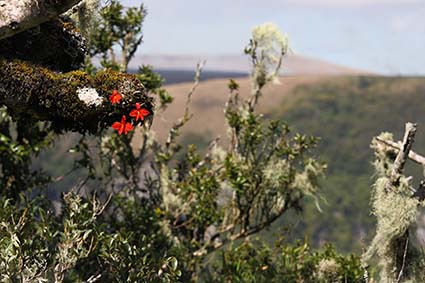 |
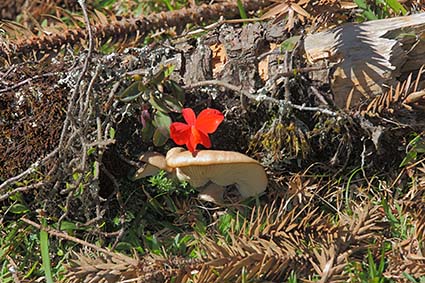 |
| Sophronitis mantiqueirae is abundant here, both inside the forest (above, right) and on more exposed areas on the canyon drops (above, left). In the latter case, they add to the breathtaking scennery. | |
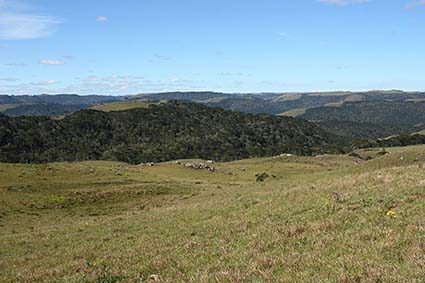 |
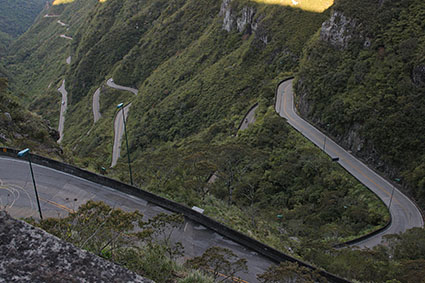 |
| Above left
we have a typical view from the top and edge of the tablelands, very
similar to our first picture after going up the mountains. We can
see the intermingled patches of forest and natural grassslands
typical of the frostline vegetation. We went down to the lowlands by the Serra do Rio do Rastro (above, right), one of those scariest roads in the world (http://www.dangerousroads.org/south-america/brazil/292-rodovia-sc-438-brazil.html). Luckilly, the road is well maintained and even illuminated so at night it is even more exciting. From there, we spent the night in Garopaba and the next day drove all the way to Rio de Janeiro (a good 700 mile drive). |
|
